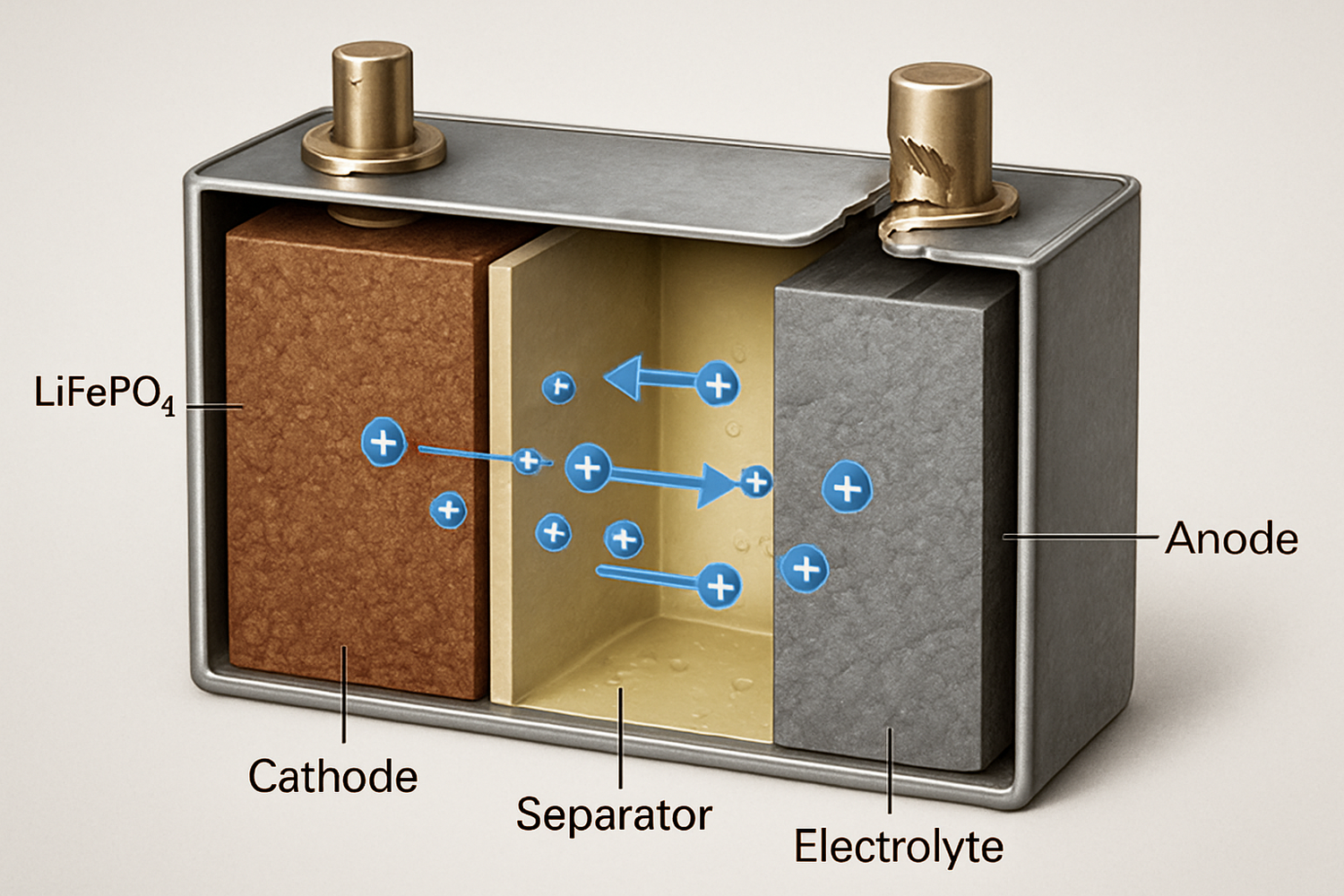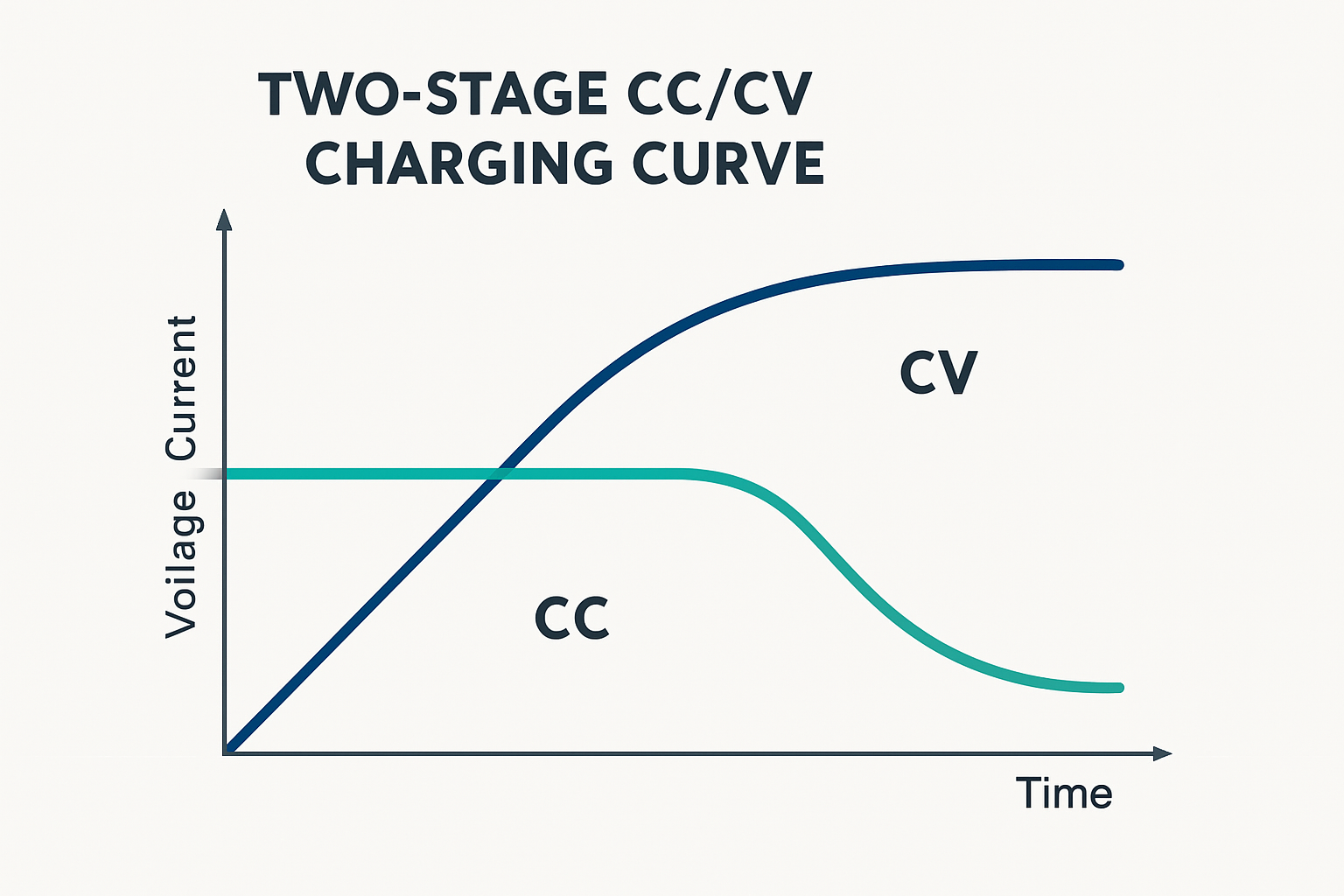Lithium iron phosphate (LiFePO4) batteries are a cornerstone of modern solar energy storage systems, celebrated for their long lifespan, thermal stability, and safety profile. Many users believe they are immune to the charging errors that affect other lithium-ion chemistries. But can you overcharge a LiFePO4 battery? The short answer is yes, and understanding the risks is crucial for protecting your investment and ensuring operational safety. While these batteries are robust, their longevity depends on proper handling, particularly during the charging cycle.
Understanding LiFePO4 Charging Fundamentals
The resilience of a LiFePO4 battery stems from its unique chemistry and the sophisticated electronics that protect it. Acknowledging these two elements is the first step toward safe and efficient charging.
The Inherent Safety of LiFePO4 Chemistry
LiFePO4 batteries have a crystalline structure based on a phosphate-oxide framework that is exceptionally stable. Unlike other lithium-ion types that use cobalt oxide or manganese oxide, the P-O bond in the phosphate is very strong. This chemical stability makes the battery less prone to thermal runaway, even under high temperatures or significant stress. As noted in a report by the International Renewable Energy Agency, the choice of battery technology is always a compromise between safety, cost, and performance, and LiFePO4 excels in the safety department. This makes it an ideal choice for home energy storage and off-grid solar solutions.
The Critical Role of the Battery Management System (BMS)
Every modern LiFePO4 battery pack includes a Battery Management System (BMS). This electronic circuit is the brain of the battery, providing a vital layer of protection. Its primary functions include:
- Overcharge Protection: The BMS monitors the voltage of each cell and will automatically cut off the charging current if the voltage exceeds a safe upper limit.
- Over-Discharge Protection: It prevents the battery from being drained too much, which can cause permanent damage.
- Cell Balancing: It ensures all cells within the pack maintain an equal state of charge, improving overall performance and lifespan.
- Temperature Monitoring: The BMS will halt charging or discharging if the battery's temperature goes outside a safe operating range.
Without a functioning BMS, a LiFePO4 battery would be highly vulnerable to overcharging and other damaging conditions.
What Happens During an Overcharge Event?
Despite the safeguards, it's important to know what occurs when a LiFePO4 battery is pushed beyond its limits. This can happen if the BMS fails or if an incorrect, non-compliant charger is used.
Immediate Risks: Voltage Spikes and Heat Generation
When a LiFePO4 cell is overcharged, its voltage rises sharply. This process forces an excess of lithium ions into the cathode material, causing structural stress. This reaction is exothermic, meaning it generates heat. While LiFePO4 chemistry is resistant to thermal runaway, excessive heat can still damage internal components like the separator, which keeps the anode and cathode from shorting.
Long-Term Damage: Reduced Capacity and Cycle Life
The most common outcome of a minor overcharge event is permanent damage to the battery's performance. Overcharging can lead to a phenomenon called lithium plating, where metallic lithium forms on the anode. This reduces the amount of active lithium available for the energy storage reaction, resulting in a permanent loss of capacity. According to research from IRENA's Innovation Outlook: Smart charging for electric vehicles, a battery's capacity naturally decreases over time, but this process accelerates drastically if the battery is not cycled under smooth conditions. Overcharging is one of the most stressful conditions a battery can experience.
The Worst-Case Scenario: Thermal Runaway
Although extremely rare for LiFePO4 batteries, severe and prolonged overcharging can theoretically lead to thermal runaway. This is a chain reaction where rising temperatures cause the battery to break down further, releasing more heat. This can result in the battery venting hot, flammable gases. The International Energy Agency's report, The State of Energy Innovation, discusses ongoing research into solid-state electrolytes to further enhance battery safety, but for now, the BMS remains the primary defense against such events in current technologies.
Best Practices for Safe LiFePO4 Charging
Ensuring the longevity and safety of your LiFePO4 battery is straightforward. It comes down to using the right equipment and configuring it correctly.
Always Use a LiFePO4-Specific Charger
Chargers are not one-size-fits-all. LiFePO4 batteries require a specific charging algorithm, typically CC/CV (Constant Current/Constant Voltage). Using a charger designed for lead-acid batteries can be dangerous, as their charging profiles, including features like equalization, can push the voltage of a LiFePO4 battery far beyond its safe limits, potentially bypassing the BMS protections.
Configure Your Solar Charge Controller Correctly
In a solar power system, the solar charge controller regulates the power from the solar panels to the battery. It is essential to set the correct charging parameters for your LiFePO4 battery. Key settings include:
- Bulk/Absorption Voltage: Typically set between 14.2V and 14.6V for a 12V system.
- Float Voltage: Usually set around 13.5V to 13.8V. Some installers recommend disabling it entirely.
- Equalization: This feature should always be disabled for LiFePO4 batteries.
Properly configuring these settings is fundamental to achieving optimal solar storage performance and protecting your battery from damage.
Pay Attention to Temperature
Temperature has a significant impact on battery health. Most LiFePO4 batteries should not be charged at temperatures below freezing (0°C or 32°F). Charging a frozen battery can cause lithium plating, leading to irreversible capacity loss. A quality BMS will include low-temperature cut-off protection to prevent this. As IRENA points out, an efficient cooling system (and by extension, temperature management) is needed to reach the maximum battery lifetime.
A Final Word on Battery Safety
So, can you overcharge a LiFePO4 battery? Yes, but it is highly preventable. The technology's inherent chemical stability, combined with a high-quality Battery Management System, creates a formidable defense. By using a dedicated LiFePO4 charger, correctly configuring your solar equipment, and operating within the recommended temperature range, you can effectively eliminate the risks. These practices ensure your energy storage system remains safe, reliable, and powerful for its entire service life, helping you achieve true energy independence.
Frequently Asked Questions About LiFePO4 Battery Charging
Can a LiFePO4 battery be left on the charger indefinitely?
With a high-quality Battery Management System (BMS), yes. The BMS will automatically stop the charging process once the battery is full. However, for long-term storage, it is recommended to store the battery at a partial state of charge (around 50-80%) rather than leaving it on a charger continuously.
What is the maximum charging voltage for a 12V LiFePO4 battery?
Typically, the maximum charging voltage for a 12V LiFePO4 battery (which is a 4-cell series, or 4S) is between 14.4V and 14.6V. Always check the manufacturer's specifications for your specific battery, as these values can vary slightly.
Does overcharging void the warranty?
In most cases, yes. Damage caused by using an incorrect charger or improperly configured charging parameters, leading to an overcharge event, is typically not covered under warranty. This is why following the manufacturer's guidelines is so important for protecting your hardware.





Leave a comment
All comments are moderated before being published.
This site is protected by hCaptcha and the hCaptcha Privacy Policy and Terms of Service apply.